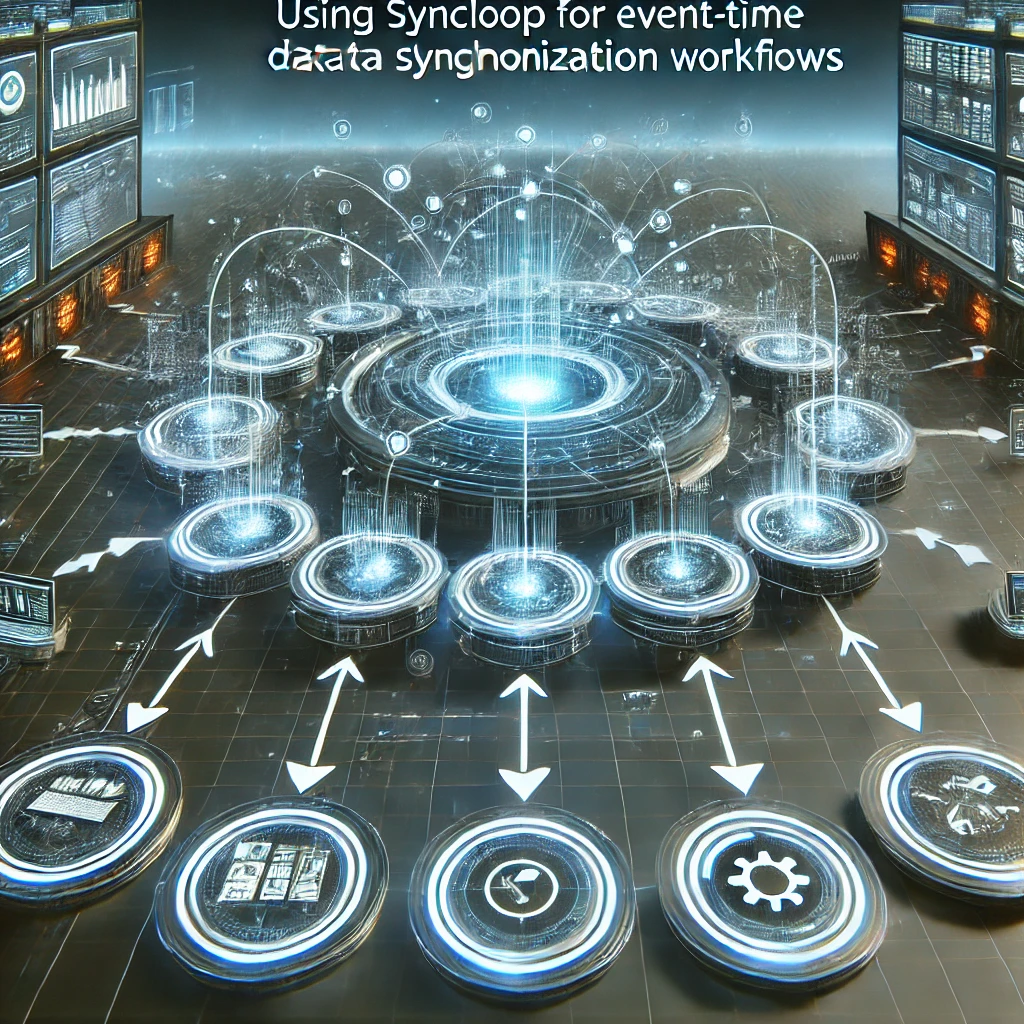Using Syncloop for Event-Driven Data Synchronization Workflows

Why Choose Event-Driven Data Synchronization?
Event-driven data synchronization is particularly suited for scenarios requiring real-time updates. Key benefits include:
- Timeliness: Synchronize data immediately after an event occurs.
- Efficiency: Reduce unnecessary data processing by reacting only to specific events.
- Scalability: Handle large-scale data exchanges with low latency.
- Flexibility: Customize workflows based on the type of event and target systems.
Syncloop provides the tools to design and implement robust event-driven workflows, making data synchronization seamless and scalable.
Features of Syncloop for Event-Driven Workflows
1. Event Triggers
Syncloop supports triggers that react to specific events, such as data creation, updates, or deletions.
2. Dynamic Workflows
Use Ifelse and Await controls to create workflows that respond dynamically to different event types and conditions.
3. Data Transformation
Transformers in Syncloop reformat data for compatibility with target systems, ensuring smooth synchronization.
4. Error Handling
Redo and fallback workflows provide resilience against synchronization failures, enabling retries and alternative actions.
5. Real-Time Monitoring
Monitor workflow execution and performance metrics in real time with Syncloop’s analytics dashboard.
6. Scalability
Syncloop’s infrastructure handles high volumes of event-driven operations with consistent performance.
Building Event-Driven Data Synchronization Workflows with Syncloop
Step 1: Identify Events
Determine the events that should trigger data synchronization, such as:
- New records in a database.
- Updates to existing data.
- File uploads or modifications.
Step 2: Configure Event Triggers
Set up triggers in Syncloop for each type of event. Specify conditions to filter relevant events, reducing unnecessary processing.
Step 3: Design Synchronization Workflows
Use Syncloop’s workflow automation tools to define synchronization steps. Examples include:
- Fetching data from the source system.
- Transforming data to match the schema of the target system.
- Sending the transformed data to the target system.
Step 4: Implement Data Transformation
Incorporate Transformers to standardize data formats and ensure compatibility across systems. For example, convert JSON to XML or normalize date formats.
Step 5: Enable Error Recovery
Configure Redo controls to retry failed synchronization attempts. Use fallback workflows to handle persistent errors, such as sending alerts or logging failures.
Step 6: Monitor and Optimize
Track synchronization workflows in real time using Syncloop’s monitoring tools. Identify and resolve bottlenecks to improve efficiency.
Real-World Applications
1. E-Commerce
Synchronize product inventory, order statuses, and customer data between multiple systems in real time.
2. Healthcare
Ensure patient records remain consistent across EHR systems, diagnostic tools, and insurance platforms.
3. Financial Services
Enable real-time data synchronization between payment gateways, fraud detection systems, and accounting tools.
4. IoT Applications
Synchronize data from IoT devices with cloud platforms for analytics and monitoring.
Best Practices for Event-Driven Synchronization
- Minimize Processing Overhead: Use filters to process only relevant events, reducing unnecessary workload.
- Ensure Data Integrity: Validate data during transformation to prevent errors in target systems.
- Design for Scalability: Leverage Syncloop’s scalable infrastructure to handle high event volumes.
- Monitor Continuously: Track metrics and workflows to identify and address issues proactively.
- Implement Robust Error Handling: Use retries and fallbacks to ensure data consistency despite occasional failures.
Why Syncloop Stands Out for Event-Driven Workflows
Syncloop’s combination of real-time triggers, dynamic workflows, and robust monitoring tools makes it an ideal platform for event-driven data synchronization. Its user-friendly interface and advanced automation capabilities simplify the implementation of even the most complex workflows.
Conclusion
Event-driven data synchronization is key to maintaining consistency and reliability in modern applications. With Syncloop, developers can build efficient, scalable, and resilient synchronization workflows tailored to their specific needs. Whether for e-commerce, healthcare, or IoT, Syncloop empowers you to achieve seamless data synchronization with ease.
Back to Blogs